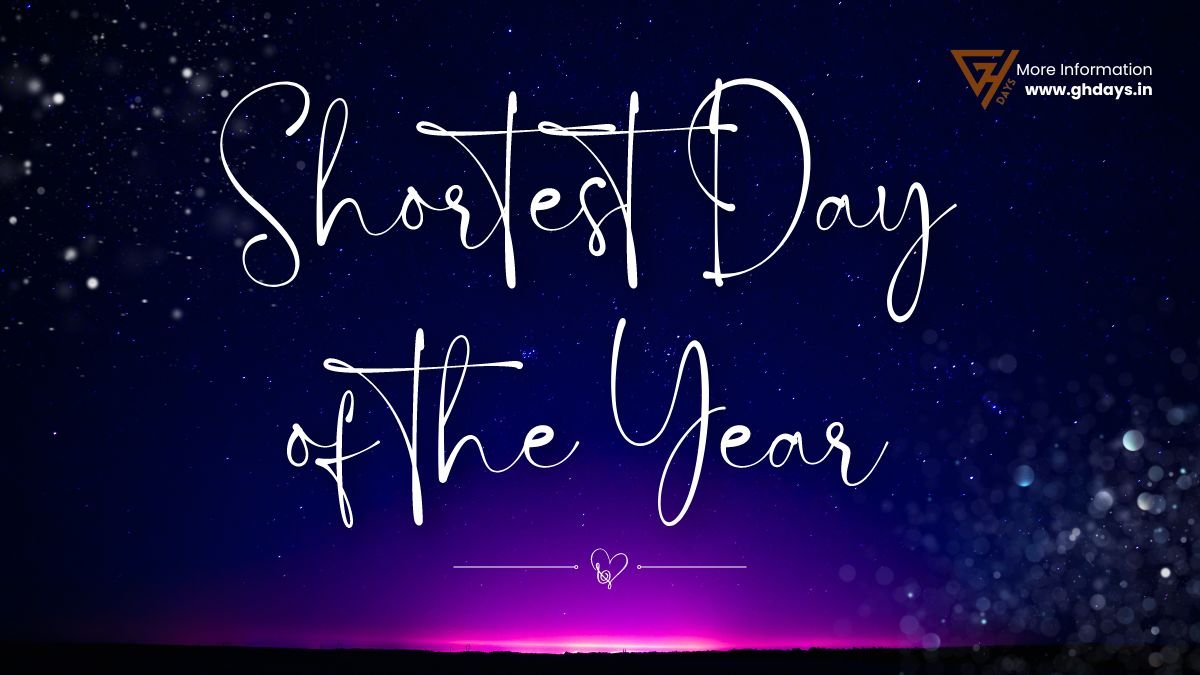Winter Solstice 2024: Shortest Day of the Year – GHdays
As winter approaches, the natural world prepares for the shortest day of the year, also known as the winter solstice. This astronomical event marks the day with the fewest hours of daylight and the longest night of the year. The winter solstice typically falls on December 21st in the Northern Hemisphere, signaling the official start of winter. This phenomenon has been celebrated and observed by various cultures throughout history, often with rituals and festivals to welcome the return of longer days and the promise of spring. In this article, we will delve into the significance of the shortest day of the year and explore its cultural, scientific, and symbolic meanings.
Table of Contents
The Astronomical Phenomenon
The winter solstice occurs when the Earth’s axial tilt is farthest away from the sun, resulting in the shortest period of daylight for the Northern Hemisphere. During this time, the sun reaches its lowest point in the sky, casting long shadows and creating a sense of stillness and introspection. The exact timing of the winter solstice can vary slightly each year, but it typically occurs between December 20th and 23rd. In contrast, the Southern Hemisphere experiences its longest day and shortest night on this date, marking the summer solstice.
From an astronomical perspective, the winter solstice is a pivotal moment that marks the transition from decreasing daylight to increasing daylight. It symbolizes the rebirth of the sun and the gradual lengthening of days as the Earth continues its orbit around the sun. This cyclical pattern of light and darkness has profound implications for life on Earth, influencing seasonal changes, weather patterns, and natural rhythms.

Shortest Day of the Year
Throughout history, cultures around the world have marked the winter solstice with ceremonies, festivals, and rituals that honor this significant celestial event. One of the most well-known celebrations is Yule, a pagan festival that predates Christmas and is still observed by modern pagans and Wiccans. Yule celebrates the rebirth of the sun god and includes traditions such as lighting candles, decorating evergreen trees, and exchanging gifts.
In many indigenous cultures, the winter solstice is a time for storytelling, reflection, and gratitude for the gifts of nature. Native American tribes often hold ceremonies to honor the changing seasons and express gratitude for the Earth’s abundance. In Scandinavia, the festival of St. Lucia’s Day is celebrated on December 13th, marking the beginning of the winter solstice season with candlelight processions and traditional foods.
Spiritual Significance Shortest Day of the Year
Beyond its astronomical and cultural significance, the winter solstice holds deep symbolic meaning for many people around the world. It is often seen as a time of renewal, rebirth, and transformation—a moment to release old patterns and embrace new beginnings. The darkness of the longest night is symbolic of inner reflection and spiritual growth, while the return of light represents hope, resilience, and the promise of brighter days ahead.
In various spiritual traditions, the winter solstice is viewed as a powerful portal for setting intentions, letting go of what no longer serves us, and aligning with our deepest desires. It is a time to connect with nature, honor the cycles of life, and cultivate a sense of gratitude for the interconnectedness of all beings. Many people use this time to engage in practices such as meditation, journaling, or ritual ceremonies to mark this sacred moment in the annual calendar.
Modern Observance and Contemporary Relevance
In today’s fast-paced world, where technology often disconnects us from nature’s rhythms, the winter solstice serves as a poignant reminder of our place within the larger cosmos. As we gather with loved ones, light candles, or simply pause to witness the changing light outside our windows, we are reminded of our interconnectedness with the natural world and our shared human experience.
The winter solstice invites us to slow down, reflect on the past year, and set intentions for the year ahead. It encourages us to embrace the darkness within ourselves and find beauty in moments of stillness and quiet contemplation. In a world that often values productivity and busyness, the winter solstice offers a precious opportunity to pause, breathe, and reconnect with our inner wisdom.
In conclusion, the shortest day of the year holds profound significance across cultures and traditions, serving as a reminder of nature’s cycles, our connection to the cosmos, and the eternal dance of light and darkness. As we welcome the return of longer days and look forward to the promise of spring, may we carry with us the lessons of introspection, renewal, and gratitude that the winter solstice brings each year.
